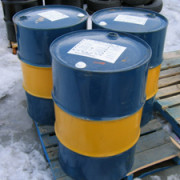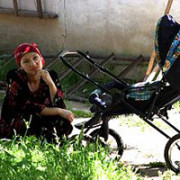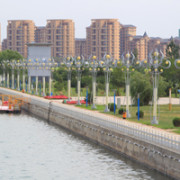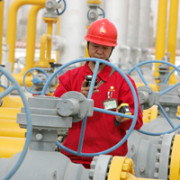Archive | Economics RSS feed for this section
Economics
 Economics
Economics
 Economics
Economics
 Economics, Finance sector development
Economics, Finance sector development
 Economics
Economics
 Economics
Economics
 Economics
Economics
 Economics
Economics
 Economics, Finance sector development
Economics, Finance sector development
 Economics
Economics

Importance of SMEs in the Thai economy
By Naoyuki Yoshino, Farhad Taghizadeh-Hesary, Phadet Charoensivakorn and Baburam Niraula. Posted July 31, 2015

Small and medium-sized enterprises (SMEs) play a significant role in the Thai economy. In 2012 there were 2.7 million SMEs in Thailand (see Figure 1) comprising 98.5% of total enterprises. In the same year, SMEs accounted for 37.0% of gross domestic product (GDP) and 80.4% of the workforce. Thai SMEs also contributed to 28.8% of total exports and 31.9% of total imports by value in 2012.
East Asian bond markets entering choppy waters

After years of smooth sailing through calm market conditions, bond markets in East Asia are navigating through stormier weather. Data from the supplement to the 2015 Asian Development Outlook released this week shows that weaker growth in the United States and the People’s Republic of China (PRC) has weighed down overall regional growth.
Impacts of oil prices on emerging and developed economies
By Farhad Taghizadeh-Hesary, Naoyuki Yoshino, Majid Mohammadi Hossein Abadi and Rosa Farboudmanesh. Posted June 26, 2015

In recent years, the sharp increase in oil prices that began in 2001 and the two sharp declines that followed in 2008, due to the subprime mortgage crisis, and at the end of 2014–early 2015 have renewed interest in the effects of oil prices on the macro economy. Most recently, the price of oil has more than halved in a period of less than 5 months since September 2014. After nearly 5 years of stability, the price of a barrel of Brent crude oil in Europe fell from over $100 per barrel in September 2014, to below $46 per barrel in January 2015.
Currency arrangements in the Pacific—time to re-think?

The Pacific developing member countries (DMCs) of the Asian Development Bank are a heterogeneous group of economies with different levels of economic development and economic size. However, when it comes to choosing an optimal exchange rate, the Pacific DMCs face similar challenges. All of the Pacific economies are relatively small and have underdeveloped financial and exchange rate markets.
The necessity of developing SME databases in Asian economies

Considering the importance of small and medium-sized enterprises (SMEs) for employment and GDP and the number of such firms in Asian countries, further efforts need to be made to offer SMEs access to finance. Asian economies are often characterized as having bank-dominated financial systems and underdeveloped capital markets, and as a result, banks are the main source of financing for SMEs.
Middle-income economies: Slowdowns, traps and transitions

The notion of a middle-income trap has generated much interest and discussion, but little consensus. There is no agreement on what the trap is or how long a country needs to be at the middle-income stage to be considered trapped. Much of the current discussion is about growth slowdowns, but is a slowdown the same as a trap? It is also possible that the trap does exist but we do not know what causes it.
People’s Republic of China: The challenge of the middle-income transition

The Chinese economy grew by 7.4% in 2014 and is expected to expand by 7.0% this year. These are impressive growth rates for any country but lower than what has been achieved in the past. For 3 solid decades, since the beginning of market reforms in the late 1970s, the economy expanded by an annual average of almost 10%.
What’s behind the recent oil price drop?

The price of oil has more than halved in the period of less than 5 months since September 2014. After nearly 5 years of stability, the price of a barrel of Brent crude oil in Europe fell from $117.15 on 6 September 2014, to $45.13 on 14 January 2015. Figure 1 shows the movements in the spot price of crude oil from June 2009 to February 2015, including the recent price drop.
Five bond market trends to watch out for in 2015

As 2015 gathers pace, the world seems to be entering a more uncertain and unpredictable phase. With the end of the quantitative easing by the Federal Reserve, we are entering an era of tighter global liquidity. However, this might be offset to a certain extent by more aggressive monetary policy actions from the Eurozone and Japan. The plunge in oil and other commodity prices should help reduce inflationary expectations but could also presage a weaker economic environment. All these point to a more volatile environment, making it a more challenging year for Asian bond markets.
TTIP—is the EU really interested in an “economic NATO”?

Negotiations between the European Union (EU) and the United States (US) on the Transatlantic Trade and Investment Partnership (TTIP) are currently dragging on without a clear time target—no wonder in view of the highly complex topics to agree on. But nevertheless, international speculation is running high about the potential economic and geostrategic implications of the TTIP for the EU’s economic relations with Asia, and the People’s Republic of China (PRC) in particular. Some people even claim it to be the foundation of an “economic NATO” or consider it “a response to the rise of [the PRC]


Search
Subscribe / Connect to Asia Pathways
Subjects
- Agriculture and natural resources
- Blog
- Capacity development
- Climate change
- Economics
- Education
- Energy
- Environment
- Finance sector development
- Gender
- Governance and public sector management
- Health
- Industry and trade
- Information and Communications Technology
- Infrastructure
- Miscellaneous
- Population
- Poverty
- Private sector development
- Regional cooperation and integration
- Sanitation
- Social development and protection
- Transport
- Uncategorized
- Urban development
- Video Blog
- Water
Recent Posts
- Navigating Linear Transport Infrastructure Through Conservation Landscapes
- How Are Technology Trends Shaping the Future of Insurance?
- Securing Asia’s Future Through Soil Health: Why It Matters and What Must Be Done
- Silent Struggles: Advancing Women’s Mobility with Public Transportation in Asia
- Mind Your Neighbors: Measuring Shrimp Farm Spillovers




Recent Comments